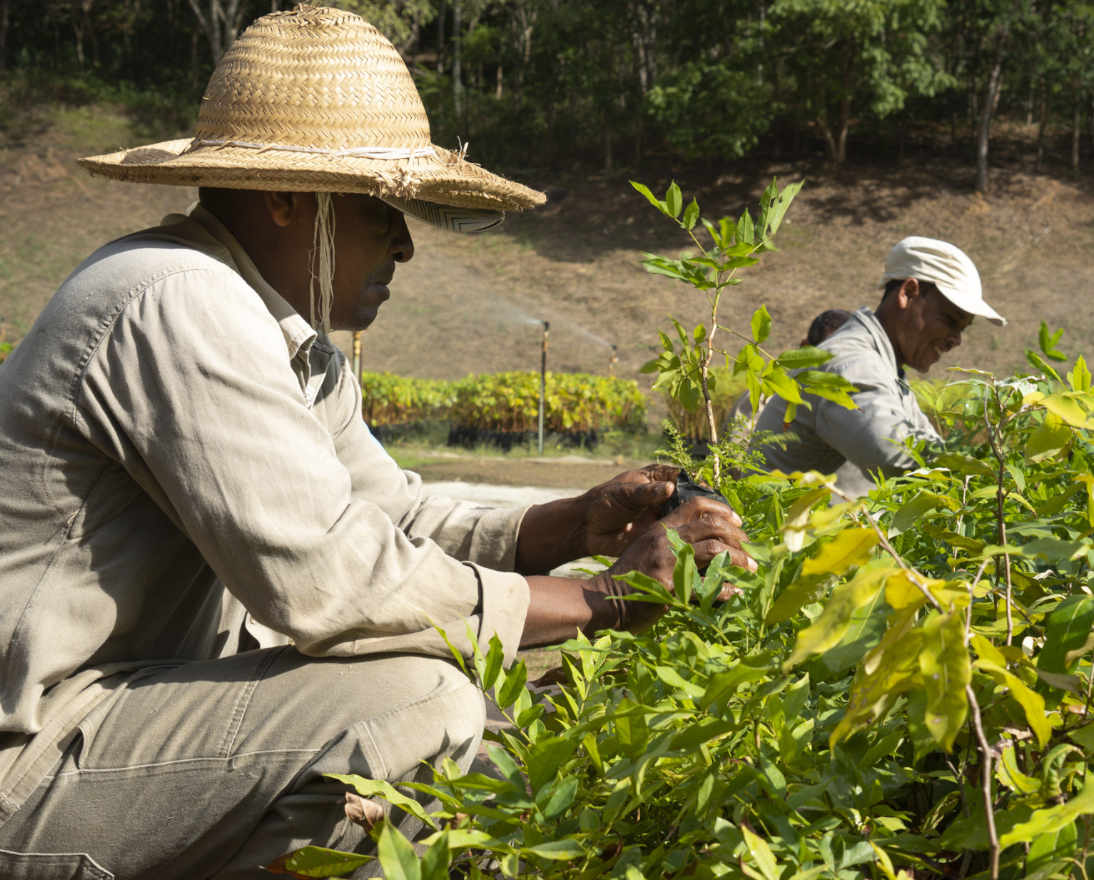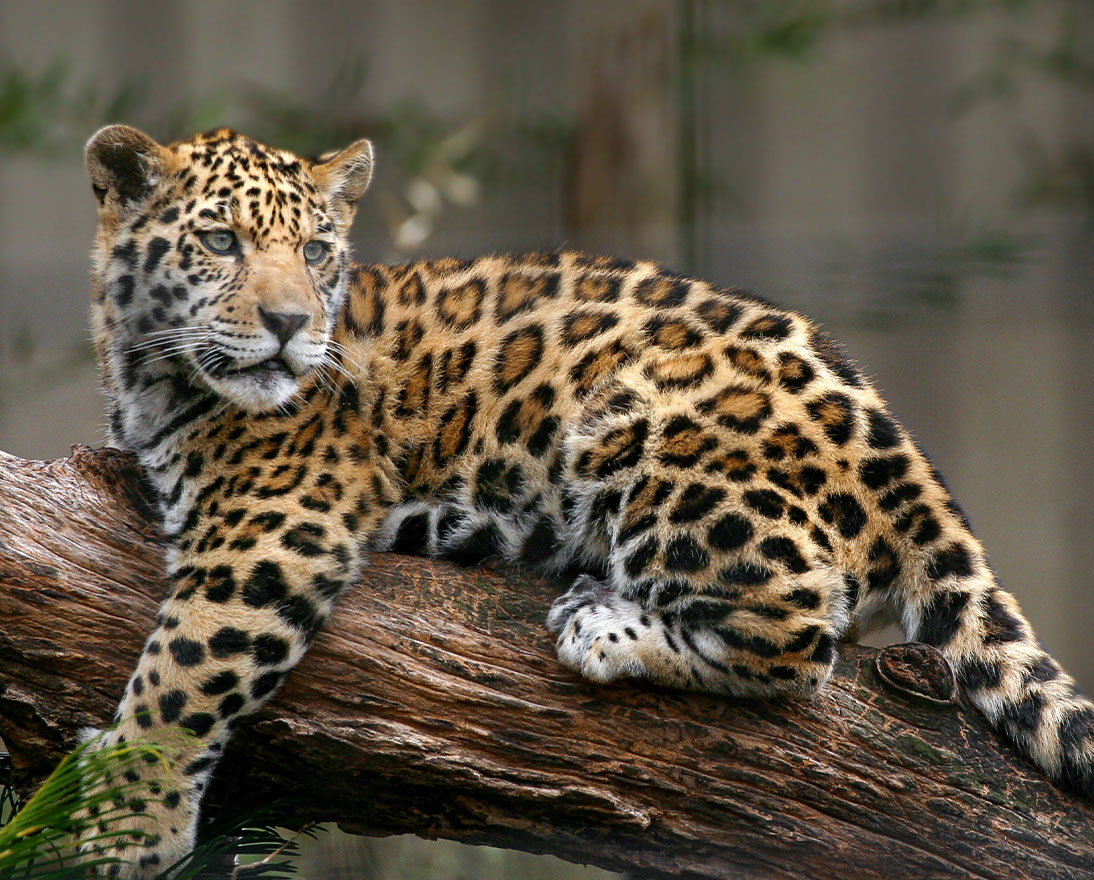
Saving Brazil’s Atlantic Forest
Weverton Rodrigues da Silva does not just plant trees. He’s helping to restore nature and the rich biodiversity of one of the world’s greatest forests: the Atlantic Forest.
By Alice Ratcliffe, with Brigitte Knup and Ines Bourbon
Most of us don’t spend much of our lives thinking about trees. It’s mainly their wood we know: perhaps as lumber, or musical instruments, or even a popular food additive, cellulose. We should think more about trees, too. Just ask Weverton Rodrigues da Silva.
Da Silva heads the tree nursery at Instituto Terra, a non-profit dedicated to restoring one of Brazil’s, and the world’s greatest forests: the Atlantic Forest, or Mata Atlântica. Da Silva knows his charges well: “Trees definitely have a personality. Some seedlings are very stubborn. Others are frail and need extra attention.” Trees, like people, are choosy about where they live. There are those that require quiet or shady areas, while others only thrive on sunshine.
The trees da Silva grows might also have another demand: “Bring back our forest.” If trees have a collective memory, Instituto Terra’s charges must long in their hearts for a time, when, centuries ago, their ancestors ruled enormous stretches of land known as the Atlantic Forest.
Instituto Terra is trying to regrow a small portion of the Atlantic Forest, which 500 years ago covered about 120 million hectares (470,000 square miles) – about twice the size of Texas. Today it is mere a shadow of its former self with only 11 to 16 percent of the original forest remaining.
Civilization is taking bites out of what is left, reducing it to a few precious islands of green, the rest destroyed through aggressive logging, by monocultures like coffee or cocoa, and through vast swathes of urban sprawl: two of the world’s largest cities, Rio de Janeiro and São Paulo, are situated atop what used to be parts of the Atlantic Forest.
Da Silva takes a little time out of a busy day to speak about his job. He’s standing in a classroom in Instituto Terra’s headquarters. On the walls, striking photos tell the story of nature in its original state. The photos are the work of award-winning Brazilian photographer Sebastião Salgado. He and his wife Lélia founded the Instituto Terra in 1998 on the site of the Salgado family’s former ranch in Brazil’s Doce river valley. The Bulcão Farm became the first Private Reserve of Natural Heritage created in a degraded area of the Atlantic Forest in Minas Gerais state.
How to restore a forest
Growing trees requires working with nature. As da Silva speaks, things are about to get very busy. The rainy season is commencing. When conditions are good, during this time of the year, Weverton and his crew might replant upwards of 5,000 seedlings a day.
Da Silva has nurtured about 234,000 seedlings, just some of the more than six million seedlings produced by Instituto Terra – and counting. Along with 2.5 million trees planted by the Instituto Terra team within the 700-hectare (2.7 square miles) reserve, the non-profit also sells, donates or otherwise makes seedlings available to be planted outside the reserve.
Instituto Terra’s nursery got its start in 2001. Love, patience and hard work have helped to breathe life into the project. So, too, has support from private sponsors. With the assistance of donations, its capacity has expanded. Zurich Insurance Group is sponsoring one project at Instituto Terra that foresees planting one million trees over eight years to nurture a biodiverse forest that will gradually become self-sustaining. So far, da Silva and his team have planted around 230,000 seedlings in the Zurich Forest Project. When will the forest be mature? Depending on the species, trees mark time in centuries, or even millennia. Thus, patience is needed.
Brazil’s staggering biodiversity
Even after centuries of depredation and degradation, Brazil’s biodiversity is staggering. Brazil is home to more than 100,000 animal species and 40,000 plant species. According to one recent study, that includes 8,847 tree species, more than any other country on Earth. But Brazil also has the highest number of the most threatened tree species, at 1,788. Several of those at risk are found only in the Atlantic Forest.
Like a dutiful parent, da Silva loves all his trees, but when pushed, he admits to having a favorite: the yellow peroba (paratecoma peroba). If one can develop affection for a particular tree, the Yellow peroba is an easy tree to love. With its airy boughs, graceful and neat leaves, it might have been designed by an artist. It grows to a majestic 40 meters (131 feet) – taller than a 10-story building. The Instituto Terra chose the tree as the first species to be part of its Atlantic Forest Genetic Bank, according to Mário Constantino, Head of Communications at Instituto Terra. Fittingly, it also serves as the Instituto Terra’s trademark.
The potentially tallest tree grown at Instituto Terra, the sapucaia (lecythis pisonis), might reach a height of 50 meters (164 feet), as tall as the Arc de Triomphe in Paris. The tree produces seeds in what look like upside-down pots. Monkeys are fond of grabbing nuts from the pods, giving the tree its common name, monkey pot tree.
Another endangered star of the Atlantic Forest, also in Instituto Terra’s seedbank, is the brazilwood tree (paubrasilia echinate). Sometimes called pau brasil, it is Brazil’s official tree and gave its name to the country. Before artificial substitutes were developed, brazilwood was coveted for making red dye. Its wood is still prized for making violin and cello bows. To craft these, nearly all of the wood of a single tree is wasted. Along with other conservation efforts, international musicians have banded together to help prevent the trees from extinction.
Growing people as well as trees
It’s not only trees that benefit. Instituto Terra also brings life back to communities and people, offering new opportunities for careers in a local economy that otherwise depends heavily on mining. Thus far, Instituto Terra has trained about 200 experts in reforestation.
That includes not only da Silva, but also the son of da Silva’s godfather, who worked at Instituto Terra as a professional environmental technician on its spring water restoration program. It was through him that da Silva learned of the Instituto’s Center for Studies in Ecosystem Restoration (the ‘Núcleo de Estudos em Restauração Ecossistêmica’, or ‘NERE’ for short). NERE enrolls 20 students each year at the Instituto’s headquarters. Many, like Da Silva, already have degrees in related fields, like agriculture, environmental science or forestry. Some continue to work for the Instituto Terra after graduating. Others return home to assist small farmers to develop sustainable practices in their own regions.
It seems only fitting that humans are helping to grow trees given that they have been destroying forests for centuries. Healthy forests support biodiversity helping to provide clean, fresh water and more habitat for wildlife, including many species that are critically endangered. By regrowing parts of the Atlantic Forest, Instituto Terra is improving life for 4.1 million people living in the region. Trees also benefit humans by capturing carbon dioxide in the atmosphere, so in a way, they improve everyone’s chances of survival.
Those who nurture trees and value them discover that trees give back. “My reward is to be able to work in such a beautiful, inspirational place – to wake up early every morning and create something for nature and society,” says da Silva. “It makes me so happy to be able to follow the progress of my seedlings. It’s great to know that in a couple of years, we will be able to see those trees growing in nature. Some of them, when grown, perhaps, only my kids and grandkids will see.”
Faces of the Forest
Andressa Vicentino works as a seedling producer and in tree nursery maintenance at Instituto Terra. “My favorite part of working here at the tree nursery is, believe it or not, the amount of love and care involved. I know it’s almost strange to say, but it’s true! The watering team is on a rotating schedule and when it’s my week I enjoy it so much. It sure is a huge responsibility. Especially during the dry months here in Aimorés,” she says.
“I enjoy the moment I arrive on my first shift and see what they need from me, whether it’s water, more shade, more sun... anything they need. You start to truly care for these plants!
“Knowing that I’m helping create a better future for my son is my absolute favorite part! I love knowing that when he has children of his own he’ll be able to share with them how I, their grandmother, helped reforest this land. In a way, I’m contributing to my own legacy. I can only hope the example I’m setting is followed by my son.”


